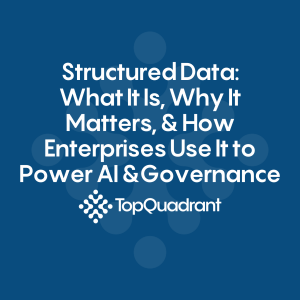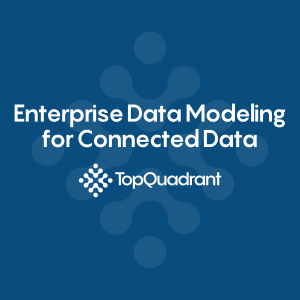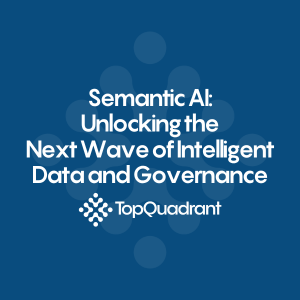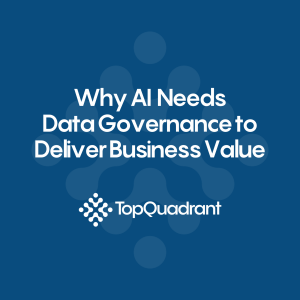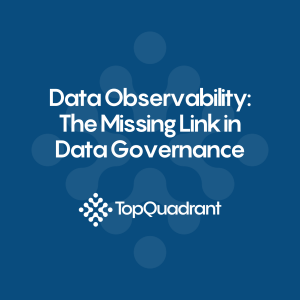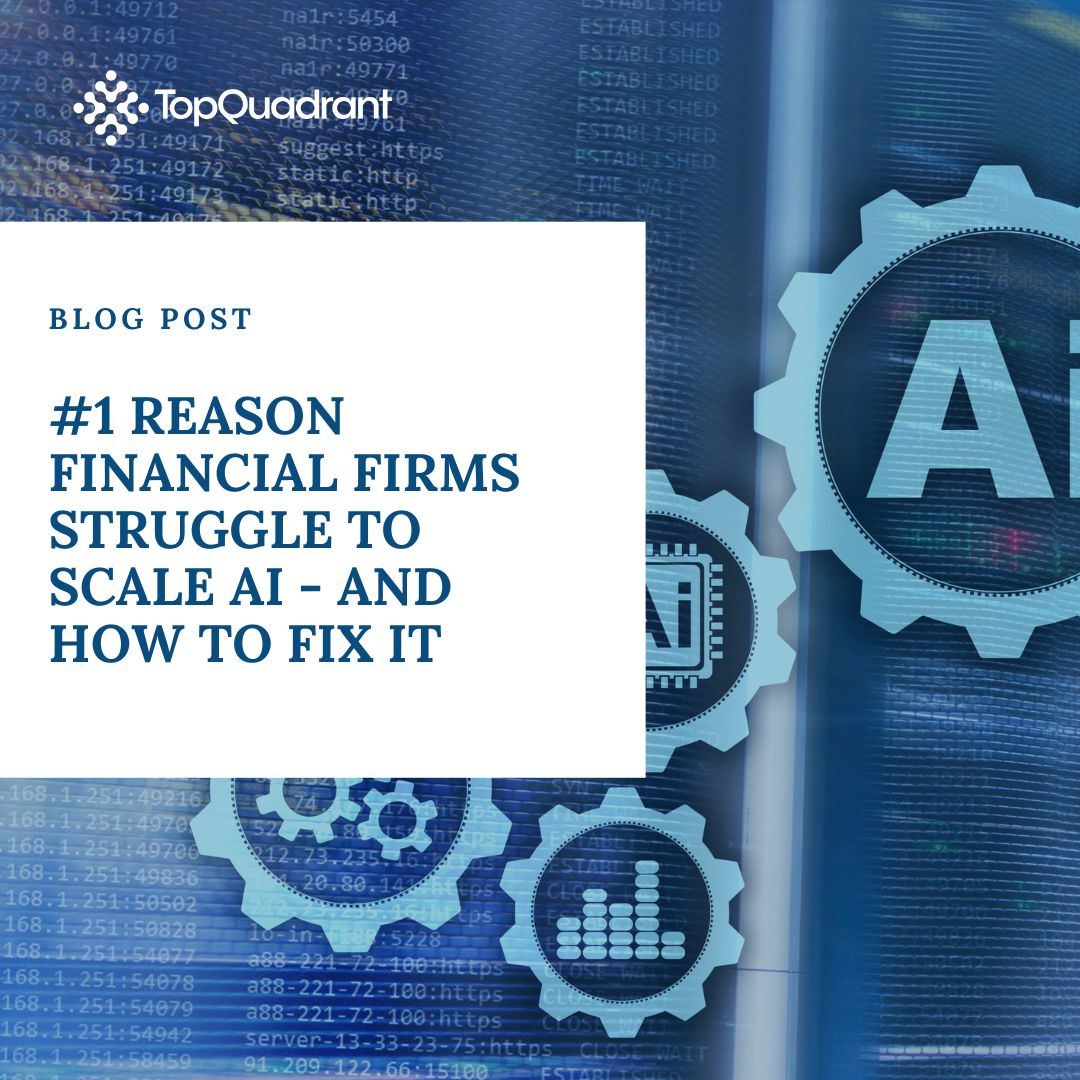Blog | Data Governance Framework: Building a Foundation for Trusted Enterprise Data

Data Governance Framework Summary
A data governance framework is the structured approach that defines how an organization manages its data assets throughout their lifecycle. For Fortune 500 companies, this framework is far more than an operational checklist – it is the foundation that ensures data is accurate, consistent, secure, and actionable across the enterprise. Without it, organizations risk inefficiency, compliance failures, and an inability to leverage their data for strategic advantage.
This post explores what a data governance framework is, why it’s mission-critical for large enterprises, how it intersects with metadata management and AI readiness, and the practical steps to design and implement a framework that works. It also addresses the growing role of semantic technologies in making governance systems scalable and adaptable in the age of AI.
What Is a Data Governance Framework?
At its simplest, a data governance framework is a blueprint for how an organization manages its data from creation to retirement. But for large enterprises with complex systems, global teams, and strict regulatory obligations, it becomes much more: a set of interconnected policies, roles, and processes designed to maximize the value of data while minimizing risks.
Rather than functioning as a single document or tool, a framework encompasses several dimensions: organizational alignment, defined responsibilities, standardization of data policies, integration with technology platforms, and continuous monitoring of compliance and quality. In practice, this means establishing clear protocols for how data is classified, stored, accessed, and eventually disposed of—while ensuring that these protocols are consistently applied across all business units and geographies.
When a framework is missing, the result is often chaos. Different teams define key business terms in conflicting ways. Data is duplicated, siloed, and inconsistently formatted. Security protocols are applied unevenly. Reports and analytics become unreliable because the underlying data cannot be trusted. By contrast, a robust governance framework creates a shared language and a unified system for handling data that benefits the entire organization.
Why Is a Data Governance Framework Critical for Large Enterprises?
For Fortune 500 companies, data governance is not just about “keeping the lights on.” It’s a strategic enabler that directly impacts revenue, efficiency, and risk management. Enterprises that lack a strong governance framework often find themselves struggling with inconsistent data definitions, operational bottlenecks, and compliance issues.
Consider regulatory compliance alone. Whether it’s GDPR in Europe, CCPA in California, HIPAA in healthcare, or industry-specific mandates in financial services, regulations are increasingly stringent. Without a framework to enforce compliance, organizations may face fines, reputational damage, or both.
The framework also serves as a safeguard against data misuse. Access controls ensure that only authorized personnel can view sensitive information. Audit trails provide transparency into who used what data and when. Clear data ownership roles ensure accountability, so if issues arise, they can be addressed quickly.
From a business performance standpoint, the framework drives efficiency. Teams spend less time reconciling conflicting data sets and more time using trusted information to make strategic decisions. It also enables agility: when new market opportunities arise, data-driven insights can be deployed quickly and confidently.
What Are the Core Components of a Strong Data Governance Framework?
While every organization tailors its governance approach to its own needs, certain components appear consistently in mature frameworks.
A governance framework typically begins with leadership commitment, often formalized through a Data Governance Council that includes executives from IT, compliance, operations, and key business units. This council sets the overall governance strategy and ensures alignment between corporate goals and data policies.
Defined roles and responsibilities are another pillar. This means appointing data stewards to oversee quality, compliance officers to ensure regulatory adherence, and data owners who are accountable for specific datasets. These roles prevent ambiguity and ensure that someone is always responsible for maintaining the integrity of the data.
Policies and standards form the operational backbone. These cover everything from naming conventions and data classification rules to security protocols and lifecycle management. For example, the organization might define how “customer” is represented in different systems or how long records must be retained before deletion.
Metadata management integrates with these policies to provide a layer of context. This includes business glossaries that define key terms, taxonomies that categorize information, and ontologies that establish relationships between datasets. By connecting these elements, metadata ensures consistency and improves data discoverability.
Finally, technology enablement brings the framework to life. Governance platforms automate workflows, enforce policies in real time, and provide dashboards for monitoring compliance and data quality. These platforms also integrate with data catalogs, analytics tools, and AI applications, ensuring governance is not an afterthought but a core part of operations.
How Does Metadata Management Strengthen Your Data Governance Framework?
Metadata is often described as “data about data,” but in the context of a governance framework, it is much more than a label or tag. Metadata creates the context that allows organizations to understand, trust, and effectively use their data assets.
Imagine an enterprise with hundreds of databases across multiple continents. Without metadata, locating the correct dataset for a quarterly report could take hours or even days. With well-managed metadata, analysts can instantly find the relevant, approved dataset, know its origin, understand its definitions, and trust its accuracy.
Business glossaries ensure that when one department uses the term “active customer,” it matches the definition used across the company. Taxonomies group related data points so they can be analyzed together, while ontologies create rich semantic relationships that allow systems – and increasingly AI agents – to reason about the data in a human-like way.
For organizations pursuing AI initiatives, metadata becomes even more important. AI models require high-quality, well-documented training data. If metadata shows that a dataset was collected under specific conditions or subject to certain privacy restrictions, this information informs model design and prevents compliance issues later.
How Does AI Change the Requirements for a Data Governance Framework?
AI doesn’t replace the need for data governance – it raises the stakes. Poor data quality, once a human inconvenience, can become a systemic risk when AI models replicate and amplify it at scale.
A governance framework adapted for AI readiness incorporates safeguards such as bias detection, transparent data lineage, and ethical usage policies. Data lineage shows exactly how a piece of information moved through systems and was transformed over time – critical for explaining AI-driven decisions to regulators or stakeholders.
The framework also extends beyond structured data to unstructured sources such as documents, images, and audio recordings. AI applications often pull from multiple formats, so governance policies must address how these are classified, stored, and integrated.
Finally, AI requires governance to be more dynamic. Instead of periodic audits, organizations must monitor data quality and compliance continuously, with automated alerts when anomalies occur.
What Role Does a Semantic Foundation Play in Data Governance?
A semantic foundation connects data governance policies directly to the data itself, enabling interoperability and machine-readability. Using standards like RDF (Resource Description Framework), SHACL (Shapes Constraint Language), and SKOS (Simple Knowledge Organization System), organizations can describe data in a way that both humans and machines understand.
This semantic layer ensures that when policies change, they can be applied automatically across all relevant datasets, regardless of the system in which they reside. For example, if privacy rules for customer data are updated, the semantic model can instantly identify all affected datasets and enforce the new policy.
It also makes governance frameworks future-proof. As new systems, regulations, and AI capabilities emerge, the semantic model adapts without requiring every system to be rebuilt. This interoperability is critical for large enterprises where technology stacks are diverse and constantly evolving.
How Can You Implement or Enhance Your Data Governance Framework?
Designing and deploying a governance framework is not a one-time project; it’s an ongoing program that matures over time. Successful implementations often start with a maturity assessment to identify existing strengths, weaknesses, and risks.
Engaging stakeholders early is essential. Governance cannot be imposed solely by IT; it must be embraced by business units, compliance teams, and executive leadership. Collaborative workshops can help align priorities and build buy-in.
Technology selection should focus on platforms that integrate governance, metadata management, and semantic modeling. Tools that offer real-time policy enforcement, automated lineage tracking, and AI integration will provide the most value over the long term.
Starting small is often more effective than attempting an enterprise-wide rollout on day one. Selecting a high-impact domain, such as customer data in a regulated industry, allows the organization to demonstrate value quickly, refine processes, and then expand governance to other domains.
Once the framework is in place, continuous improvement is key. Metrics and dashboards should track data quality, policy compliance, and user adoption, with adjustments made as business needs and regulations evolve.
Conclusion
In today’s data-driven economy, a data governance framework is not just a best practice, it’s a necessity for Fortune 500 companies aiming to remain competitive, compliant, and innovative. By integrating metadata management, semantic technologies, and AI readiness into the governance approach, enterprises can ensure that their data is accurate, trusted, and ready to deliver value across the organization.
TopQuadrant’s expertise lies in building frameworks that go beyond compliance to deliver strategic advantage. By embedding governance into the DNA of your organization, you transform data from a potential liability into one of your most valuable assets.
-
Data Governance67
-
Vocabulary Management9
-
Knowledge Graphs43
-
Ontologies15
-
Data Fabric8
-
Metadata Management18
-
Business Glossaries6
-
Semantic Layer11
-
Reference Data Management7
-
Uncategorized2
-
Data Catalogs15
-
Datasets11
-
Taxonomies4
-
News5
-
Policy and Compliance5
-
Life Sciences6
-
Automated Operations6
-
Financial Services9
-
AI Readiness25
-
Podcasts1
